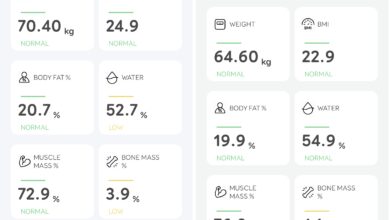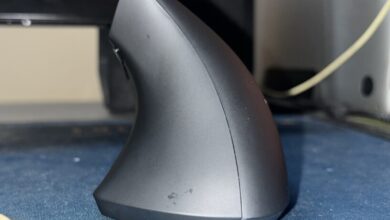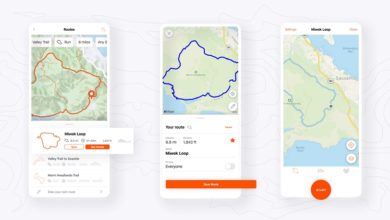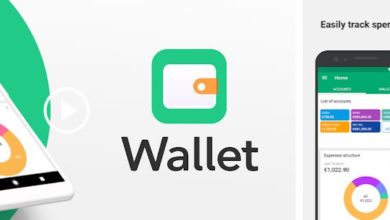We try to find out which fast charging tech is best for you
There are loads and loads of chargers available in market. Many companies have their own charging tech. Oppo and Realme have VOOC, OnePlus has Dash/Warp charge, Motorla has TurboPower, Qualcomm has Quick Charge etc. Which one of these qualifies to be the best? Read On!
Before I start, lets quickly understand how battery charging works and how companies achieve fast/quick charging and how they keep batteries from exploding.
W = V*A
Charging is all about this simple equation. Wattage = Voltage multiplied by Current. The higher the wattage, the faster the battery charge is. In basic terms, voltage is what causes charges to move and current is measures as the amount of charge that moves through a point. Some companies achieve higher wattage (higher rate of energy transfer) by increasing voltage or by increasing current.
One major problem with batteries is that they heat up if you pass higher voltage or current for longer period of time. When they heat up too much, they become volatile and explode. Either this or battery life drastically comes down if it continues to operate at higher temperature. To tackle this, all charges do fast charging for some time and then switch to charging at lower voltage/current.
When I say fast charging, two distinct technologies come into your mind. Qualcomm Quick Charge and Oppo/Realme/OnePlus VOOC Charge. In reality, there are nearly 10 different fast charging standards in the industry.Such standards include:
- MediaTek Pump Express.
- Oppo VOOC.
- Samsung Adaptive Fast Charging.
- Motorola TurboPower.
- Huawei SuperCharge.
- Qualcomm Quick Charge.
Motorola TurboPower

| Max Voltage | Max Current | Max Power | |
| TurboPower 15 | 12V | 1.67A | 15W |
| TurboPower 25 | 12V | 2.85A | 25W |
| TurboPower 30 | 5V | 5.7A | 28.5W |
Motorola TurboPower is one of the earliest implementations of fast charging and comes in 15W to 30 W power delivery. The newer models come with support for QuickCharge 3.0 standard. One of the best features of Motorola devices is that they come with bundled TurboPower chargers and these charges can be used to fast charge any phone that support TurboPower and QuickCharge. Similarly, Motorola phones can charge at higher rate if you use QC 2.0/3.0 (based on phone) chargers.
Samsung Adaptive Fast Charging

| Max Voltage | Max Current | Max Power | |
| Adaptive Fast Charging | 9V | 2A | 18W |
| Adaptive Fast Charging | 12V | 2A | 25W |
| Adaptive Fast Charging | 15W | 3A | 45W |
Samsung adaptive fast chargers are based on Qualcomm Quick Charge technology. The best charger can hit 45W peak power. The problem is that it costs a lot and it doesn’t charge a phone faster than their 25W fast charger that is bundled with S series and Note series models. Another disadvantage is that these chargers are only made by Samsung and are pricier than other chargers.
MediaTek Pump Express

| Max Voltage | Max Current | Max Power | |
| Pump Express 2.0 | 5V | 3A | 15W |
| Pump Express 3.0 | 6V | 5A | 30W |
| Pump Express 4.0 | 6V | 5A | 30W |
The newer Pump Express 4 can hit power delivery of 30W. The best part here is that Pump Express 4 is fully compatible with USB-PD 3.0 specification. This means that you can use any USB-PD compatible charger with your phone that has Pump Express 4 charging enabled and you can use Pump Express 4 charger with any USB-PD 3.0 compatible phone and fast charge that phone. The downside to this though is that these chargers are very hard to get in market and USB-PD 3.0 chargers are not cheap.
Huawei SuperCharge
| Max Voltage | Max Current | Max Power | |
| Huawei SuperCharge | 10V | 5A | 40W |
Huawei’s fast charging tech, SuperCharge can hit peak power delivery of 40W. Similar to Quick Charging, SuperCharge increases voltage to achieve higher power delivery. One of the major advantages of SuperCharge is that it handles battery in much better manner. Amount of power delivered is based on state of battery and internal temperature. Also, voltage regulation is done by wall charger, reducing strain on phone (like VOOC charger). Huawei Smart Charge logic in phone decides power delivery according to the charger that is connected. As this charging tech supports Quick Charge and USB-PD, you are not restricted to buying Huawei’s own chargers.
VOOC/Dash/Warp Charging

| Voltage | Current | Max Power | |
| Dash Charge | 5V | 4A | 20W |
| Warp Charge | 5V | 6A | 30W |
| VOOC | 5V | 5A | 25W |
| Super VOOC | 10V | 5A | 50W |
Even though Qualcomm made fast charging popular with Quick Charge technology, it is Oppo/Vivo that made giant strides in charging. Qualcomm’s fast charging used to produce mild to medium heat in phone as the voltage regulation was done in the phone. VOOC charging moved that to the charger and instead of using higher voltage, VOOC uses higher current. There is no doubt that VOOC is currently leading the race of charging. Even a 15k rupee smartphone comes with a 25W VOOC charger. In short, Vivo and Oppo completely changed the game here.
There is a problem though. As VOOC handled charging in a very different way, you cannot use a VOOC charger to fast charge non-compatible phone and you cannot use any other type of fast charger to fast charger VOOC charging enabled phone. One distinct pain point with VOOC is that you need to have compatible USB cable. Using VOOC charger and different cable will not work. The reason is simple.
Higher current generates heat and the cable should be able withstand that heat. This is why a VOOC cable is necessary to attain fast charging. Coming to charger, as VOOC uses lower voltage and higher current, it is highly proprietary. There are few 3rd party chargers that support VOOC charging but given how low cost these VOOC original chargers are, you need not look elsewhere.
Qualcomm Quick Charge

| Max Voltage | Max Current | Max Power | |
| Quick Charge 1.0 | 5V | 2A | 10W |
| Quick Charge 2.0 | 5V/9V/12V | 1.67A/2A | 18W |
| Quick Charge 3.0 | 3.6V – 20V | 2.5A/4.6A | 18W |
| Quick Charge 4.0+ | 3.6V – 20V | 2.5A/4.6A | 100W |
| Quick Charge 4.0+ with USB-PD | 5V or 9V | 3A | 27W |
The most popular and widely used charging technology. While these are yet to hit the power delivery of mainstream Warp/dash/VOOC chargers, they trump any other charging tech due to the simple fact that there are truckload of accessories that support QuickCharge. QC4+, on the paper, supports 100W power delivery. Whenever I forget to take my phone charger to office, there are countless chargers that I can use as most of my colleagues phones come with QC compatible charger. Many 3rd party brands sell QC accessories for really low prices. Though this does not mean that you should buy any cheap compatible charger.
Quick Charge 4 is compatible with USB-PD which means that even those phones that are compatible with UBS-PD can use Quick Charging compatible charger and vice versa. Not to forget the fact that Samsung, Motorola MediaTek charging tech are based on Quick Charge.
And the award goes to…
If you see the past, when it comes to mainstream technology, the best tech is not the one that is better than others. The best tech is the one that can be used by masses, day in day out. With this in mind, the best feature of Quick Charge is that it is connector- and current-independent. You do not have to buy specific cable to get fast charging. As it is connector independent, the same charger can power a phone, laptop, tablet according to support for that battery. If your phone, tablet and laptop support QC (that is where the industry is going), you use a single charger for all your devices. Quick Charge 4+ is also compatible with USB-PD, has huge support from OEMs. This is why we pick Quick Charge as the best solution for charging. Runner up would be VOOC fast charging technology, thanks to the focus on preserving battery health while pushing limits of charging.





If pump express is based on QC why doesn’t my TMO velvet not work with my QC 3.0 chargers?